Over the past decade, the city’s culinary landscape has evolved significantly thanks to an influx of international chefs and a growing appreciation for the south China region’s unique blend of flavors.
As the “Las Vegas of Asia”, the very mention of Macau probably evokes images of glitzy casinos and decadent hotels. But beyond this glamorous facade, this special administrative region has, over the years, also eked out a reputation as a gastronomic destination.
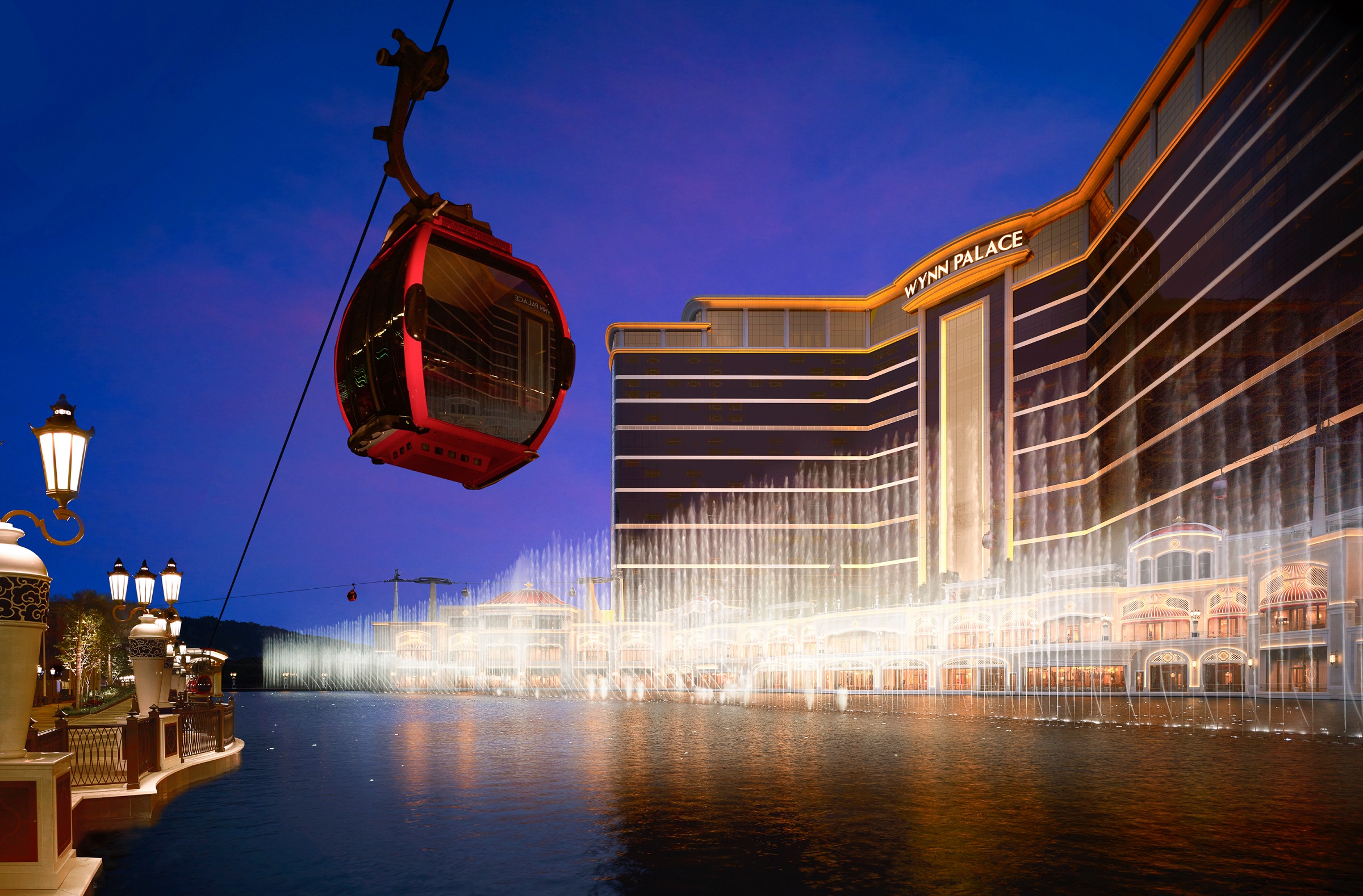 Wynn Palace Macau
Wynn Palace Macau
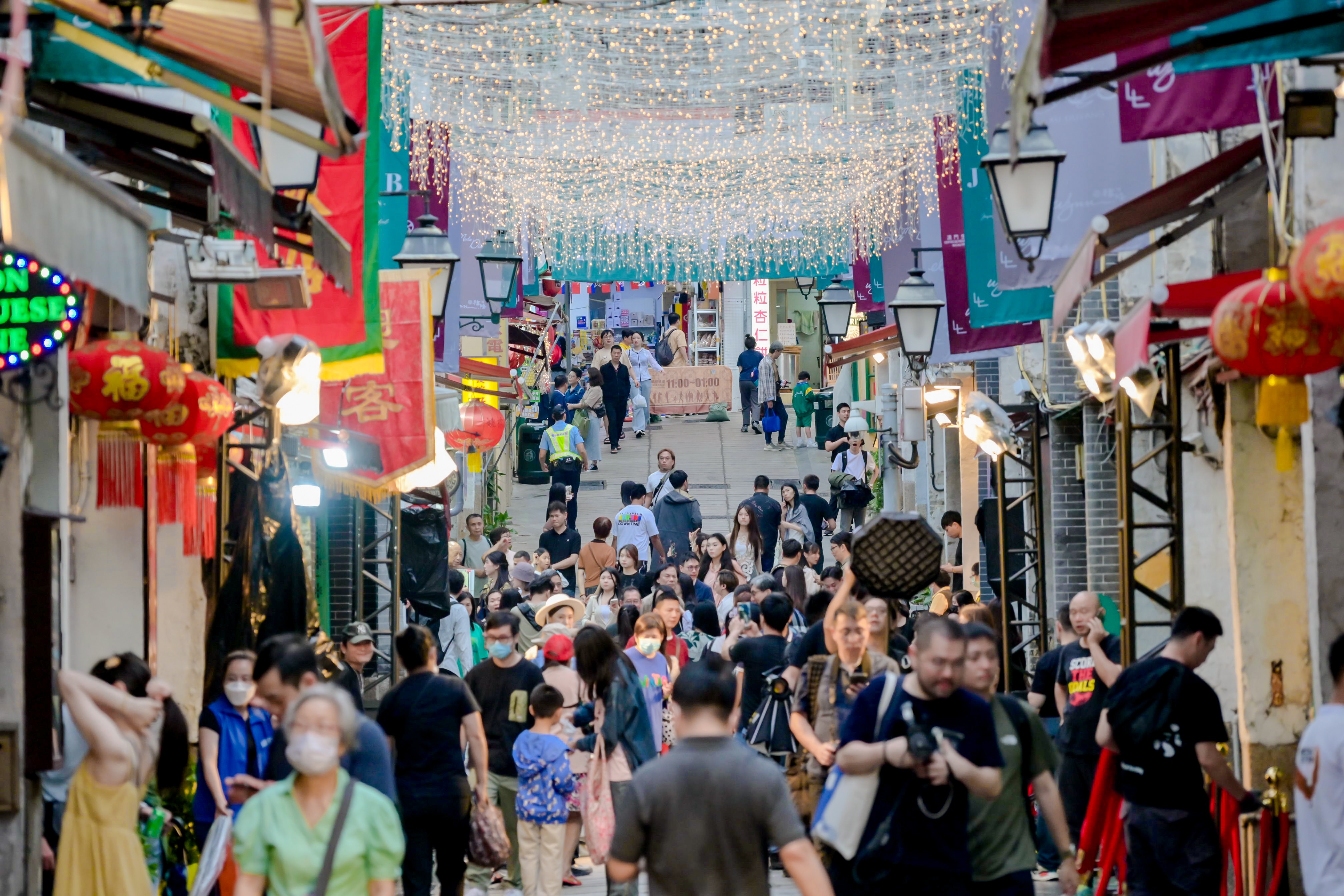 Rua Da Felicidade in Macau
Rua Da Felicidade in Macau
- FINE FLAVORS OF THE REGION
- GASTRONOMIC EXCELLENCE
- GO LOCAL
Fine Flavors of the Region
This has resulted in a thriving fine dining scene that is increasingly drawing foodies-in-the-know to Macau’s shores. One fast rising star is the restaurant Chef Tam’s Seasons at the Wynn Palace, helmed by veteran Cantonese executive chef Tam Kwok Fung.
In less than a year of its launch, the maestro has led the restaurant to a string of accolades, including one Michelin star and is listed at 49 on Asia’s 50 Best Restaurants 2024 – the highest ranked in Macau.
He achieved this by overhauling the restaurant’s menu every 15 days based on the concept of the 24 solar terms – or micro seasons – of Chinese traditional principles of health and gastronomy. This means just about every dish can be savored just once before it disappears from the menu, unless a guest happens to dine at the restaurant more than once within a 15 day timespan.
(Related: Lanson Place Causeway Bay is your home away from home in Hong Kong)
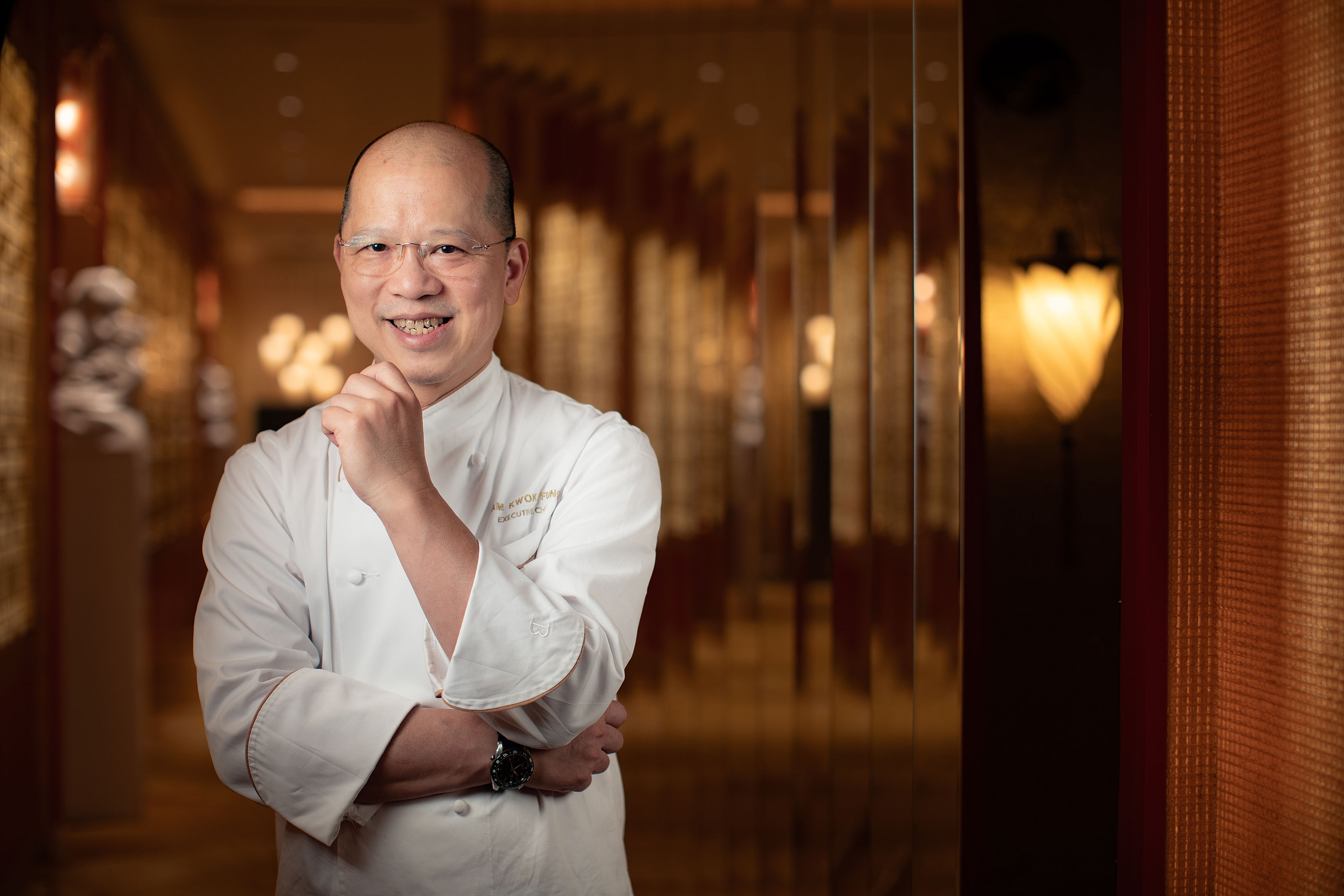 Executive Chef Tam Kwok Fung
Executive Chef Tam Kwok Fung
The affable chef, who has been in Macau since 2007 and previously led sister restaurant Wing Lei Palace to earn a Michelin Star, says this is his homage to the rich heritage of Cantonese cuisine, while honoring the bounty of ingredients which can be found within the region.
“Understanding a culture’s cuisine is about learning about the components of the dish, from the technique of cooking to the roots of the dishes and the ingredients used to make it,” says Tam.
For him, this labor of creating dishes with different combinations of seasonal vegetables, fruits, meat, and seafood that are still based on traditional techniques of Cantonese cooking is how he captures the essence and flavors of the microseason.
(Related: The Michelin Hotel Guide unveiled - the luxury travelers' new bible)
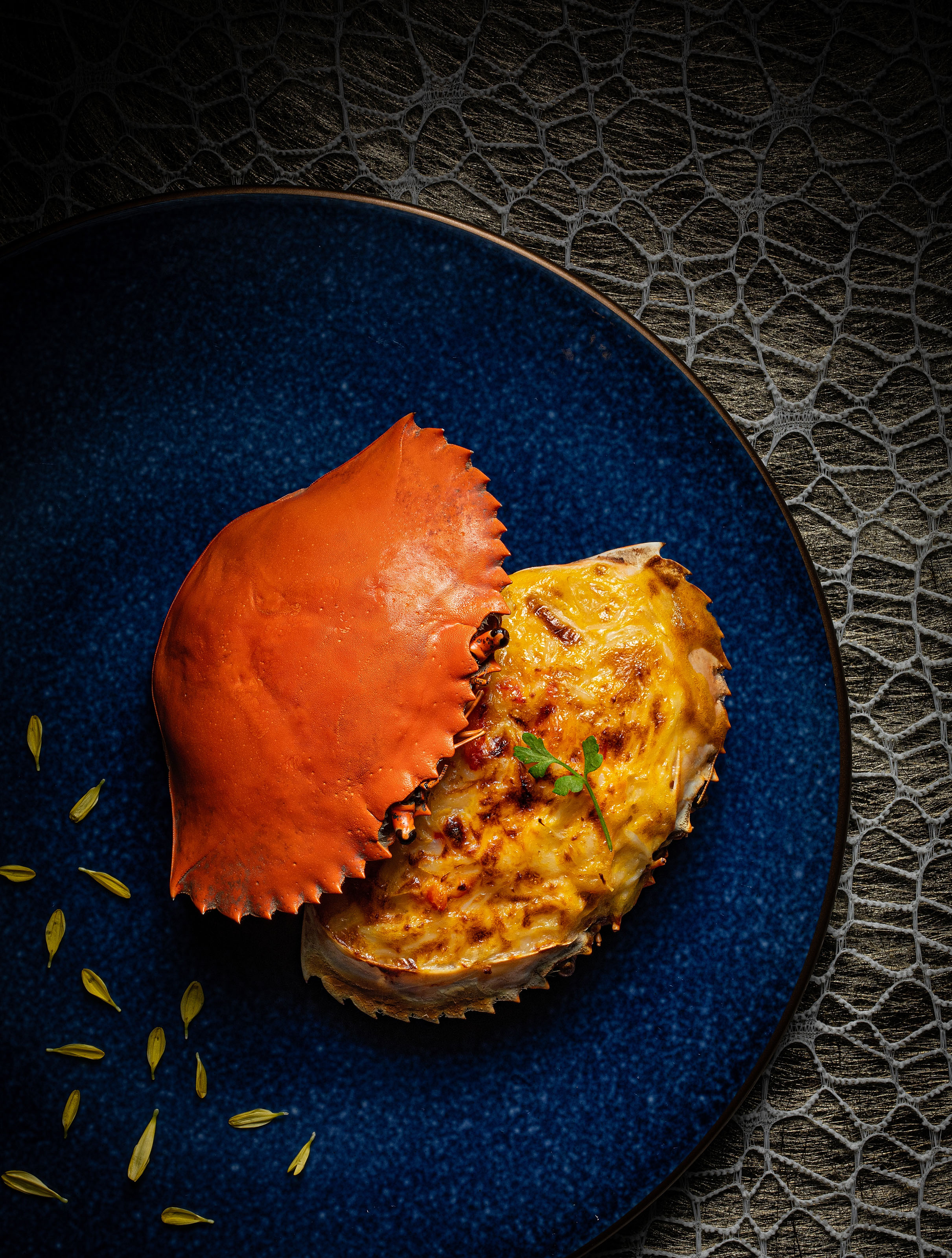 Baked Stuffed Crab Shell
Baked Stuffed Crab Shell
For example, during a media tasting in early summer, he serves up Pearl River Delta mud crab. It is known as the “King of Crabs” due to its aromatic roe and succulent white meat, and is especially valued during this time of the year because exposure to summer heat has turned part of the crab’s roe into a molten texture that is highly sought after among diners. Prepared delicately by steaming it in Hua Diao wine in classic Cantonese style, the crab is served with crab vinegar to retain the original umami notes of its meat.
- FINE FLAVORS OF THE REGION
- GASTRONOMIC EXCELLENCE
- GO LOCAL
Gastronomic Excellence

Chef Tam is not the only one pushing the boundaries of fine cuisine in Macau. While Cantonese cuisine is flourishing in part because this is a specialty of the region, other aspects of Chinese gastronomy are also gaining prominence.
There is Golden Flower at Wynn Palace, listed on the Black Pearl Restaurant Guide 2024 as a one-diamond restaurant. It focuses on modern imperial cuisine and showcases the elaborate cooking styles of the imperial courts of China through decadent dishes like slow cooked abalone dressed with crispy Zhangqiu scallions from Shandong.
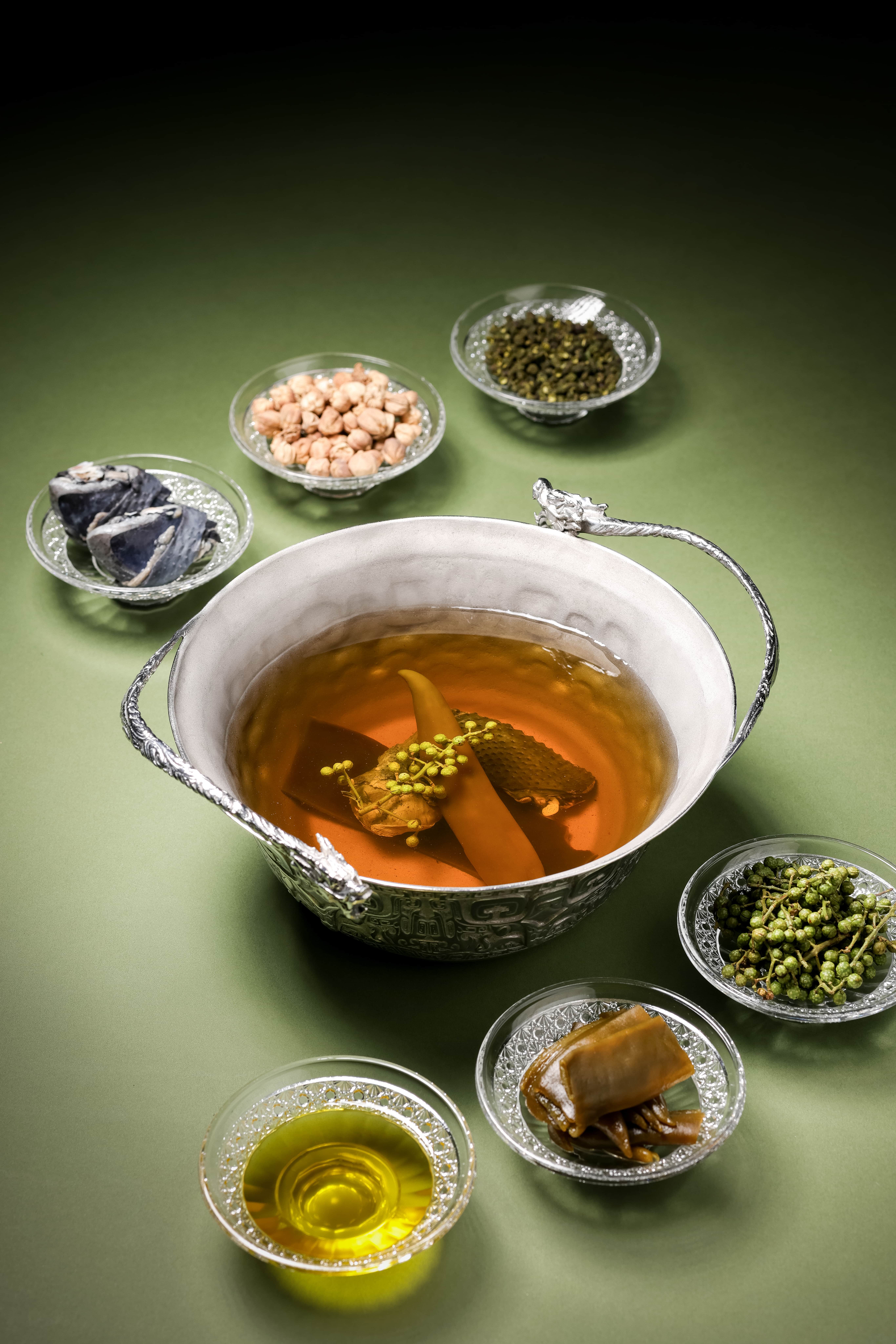 Sichuan broth
Sichuan broth
Most recently, superstar chef Andre Chiang has just launched his newest pop-up restaurant, Broth by Andre Chiang, at Wynn Macau’s Mizumi restaurant. It is a hotpot restaurant – which of course has deep roots across Chinese and other Asian cultures – but is certainly not your average hotpot experience.
Here, using top notch ingredients like fresh seafood and Wagyu beef is a given, but the aim of the ingredients are to spotlight the soups they are cooked in.
“We wanted to rethink the concept of hotpot and put the focus on the soup base itself,” says Chiang, who created eight different broths for this concept. Each concoction highlights the best of broth-making, from long-simmering Chinese double-boiled soups to Japanese nabes and French bouillons to create unique profiles such as Sichuan, Taiwanese, Southeast Asian-inspired flavours.
“You basically just dip your food in the broth and you will find that it is so flavorful that you do not need any extra depth to it.”
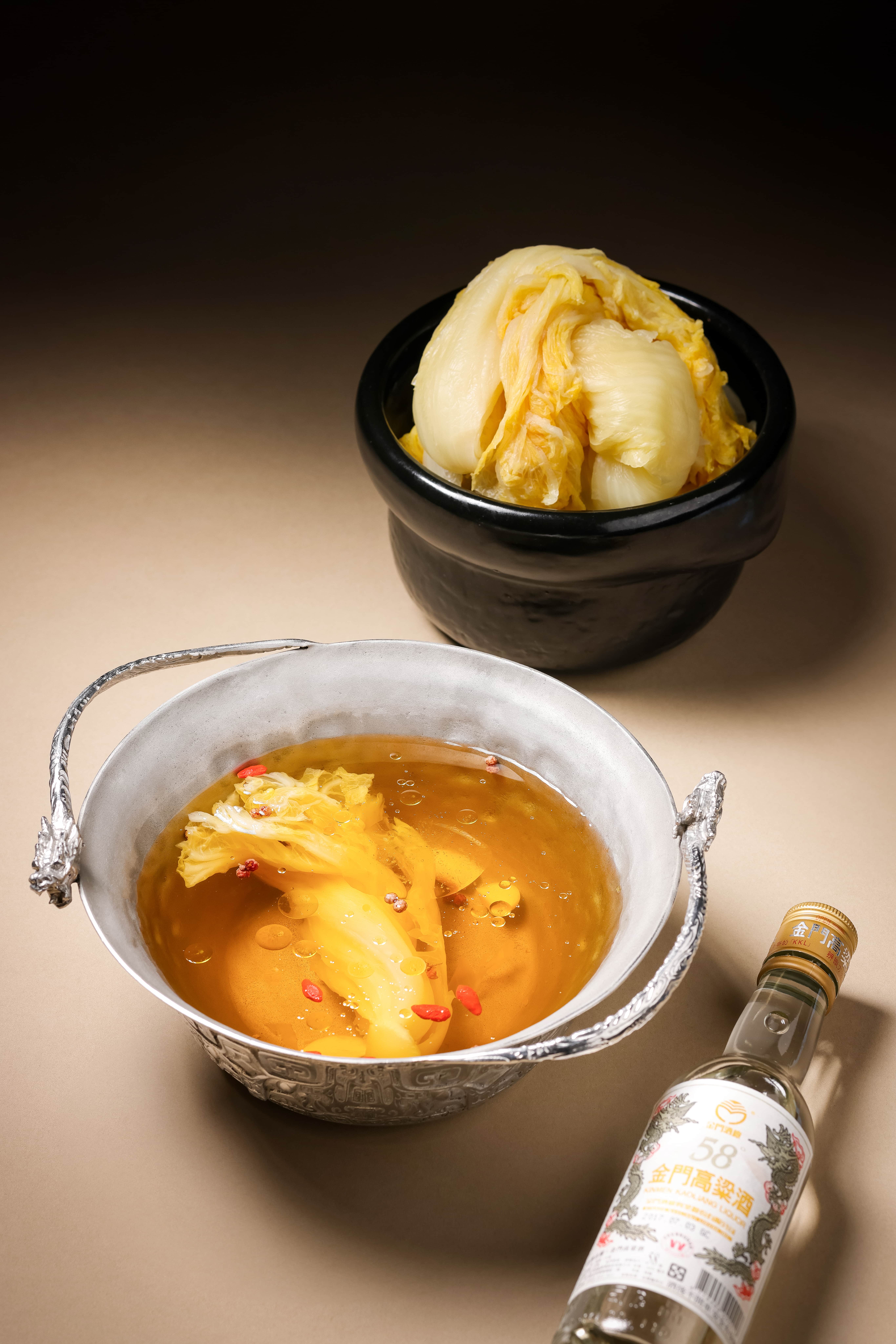 Sauerkraut Gao-liang sour cabbage broth
Sauerkraut Gao-liang sour cabbage broth
A favorite of Chiang’s is the Sauerkraut Gao-liang sour cabbage broth which rides on his hometown signature of pairing sorghum spirit with sour cabbage and pork bone, while the Sichuan broth, made with green peppers and pickled chilli and based off the chef’s family’s skinned chilli pepper chicken broth recipe is particularly versatile as a hotpot base.
To further elevate the experience and to ensure clarity of flavours, the restaurant also offers two tableside services – a shabu shabu service where meats are cooked in their respective meat bouillons to ensure optimal doneness of each specific type of meat and a starch course where noodles or rice is prepared with pure dashi as a palate-cleansing finale.
- FINE FLAVORS OF THE REGION
- GASTRONOMIC EXCELLENCE
- GO LOCAL
Go Local
In Macau, its unique local fare is certainly well worth saving some stomach space for. Because of the city’s history as a former Portuguese colony, its denizens have birthed a distinctive fusion cuisine that is as intriguing as it is delicious.
“Macanese cuisine as we know it is derived from the combination of Portuguese or Western-type cooking techniques and the use of southern Chinese ingredients,” observes Tam.
For example, pork chop buns and almond cookies are popular street snacks, while the Macanese version of Portuguese egg tarts are said to be less sweet and more custard-centric compared to the original version.
(Related: Enjoy the flavors of familiarity and comfort at these restaurants)
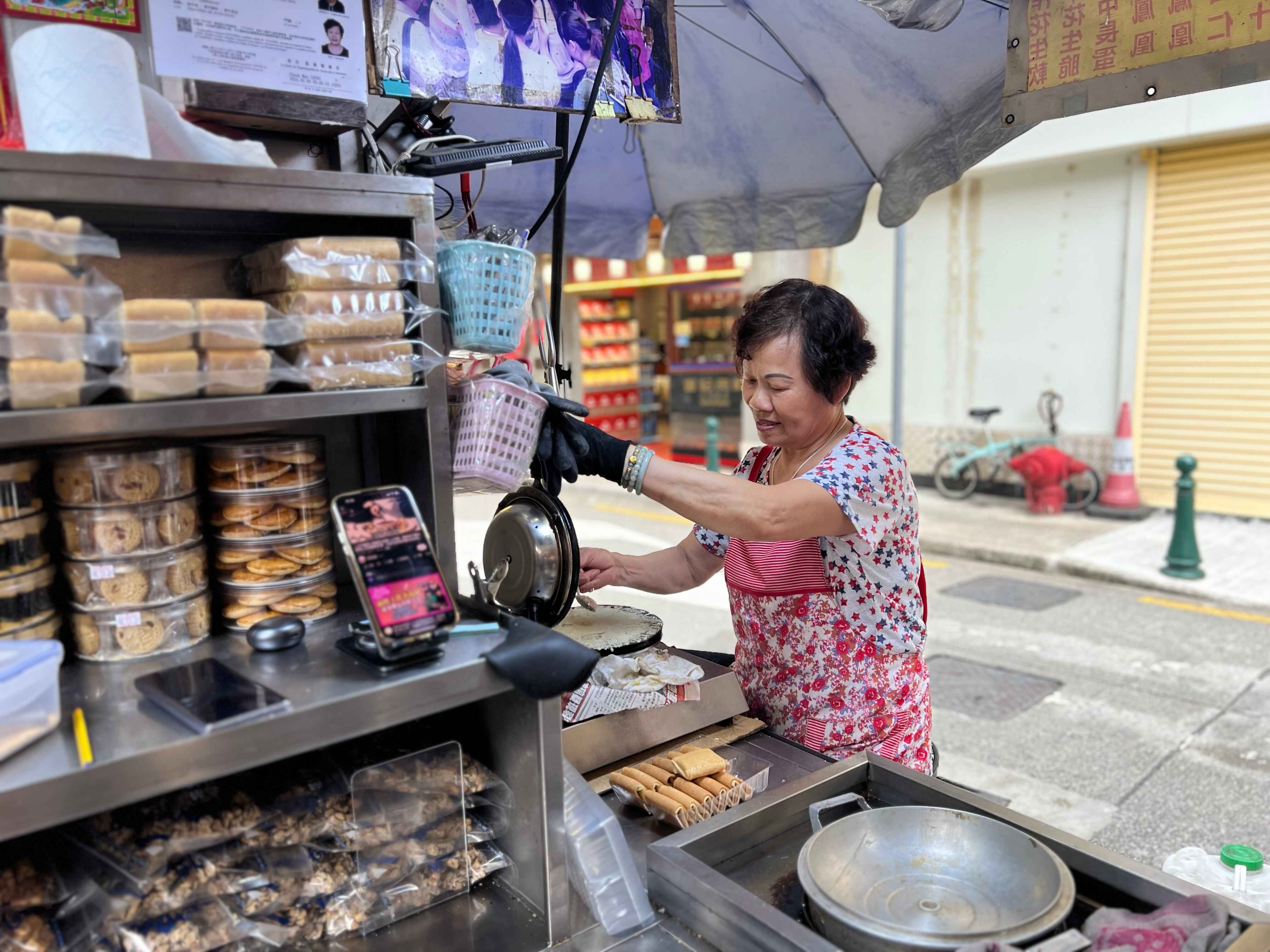 Feizaiji peanut candy stand, where egg rolls are made to order. Photo by Karen Tee
Feizaiji peanut candy stand, where egg rolls are made to order. Photo by Karen Tee
A good starting point to dip one’s toes into Macanese food is to head to Rua da Felicidade. This historical street is lined with carefully-preserved century-old buildings, many of which still house traditional eateries and snack bars.
A favourite of chef Tam’s are the har zi meen or shrimp roe noodles at Loja Sopa da Fita Cheong Kei, comprising handmade noodles topped with generous bursts of prawn roe. Across the street is the Feizaiji peanut candy stand, which is also known for its freshly pressed, extremely moreish egg rolls with pork floss and seaweed.
Other highlights on the street include Macau’s oldest restaurant Fat Siu Lau, which has been run by the same family for over a century and features a menu of Macanese-Portuguese fusion dishes.
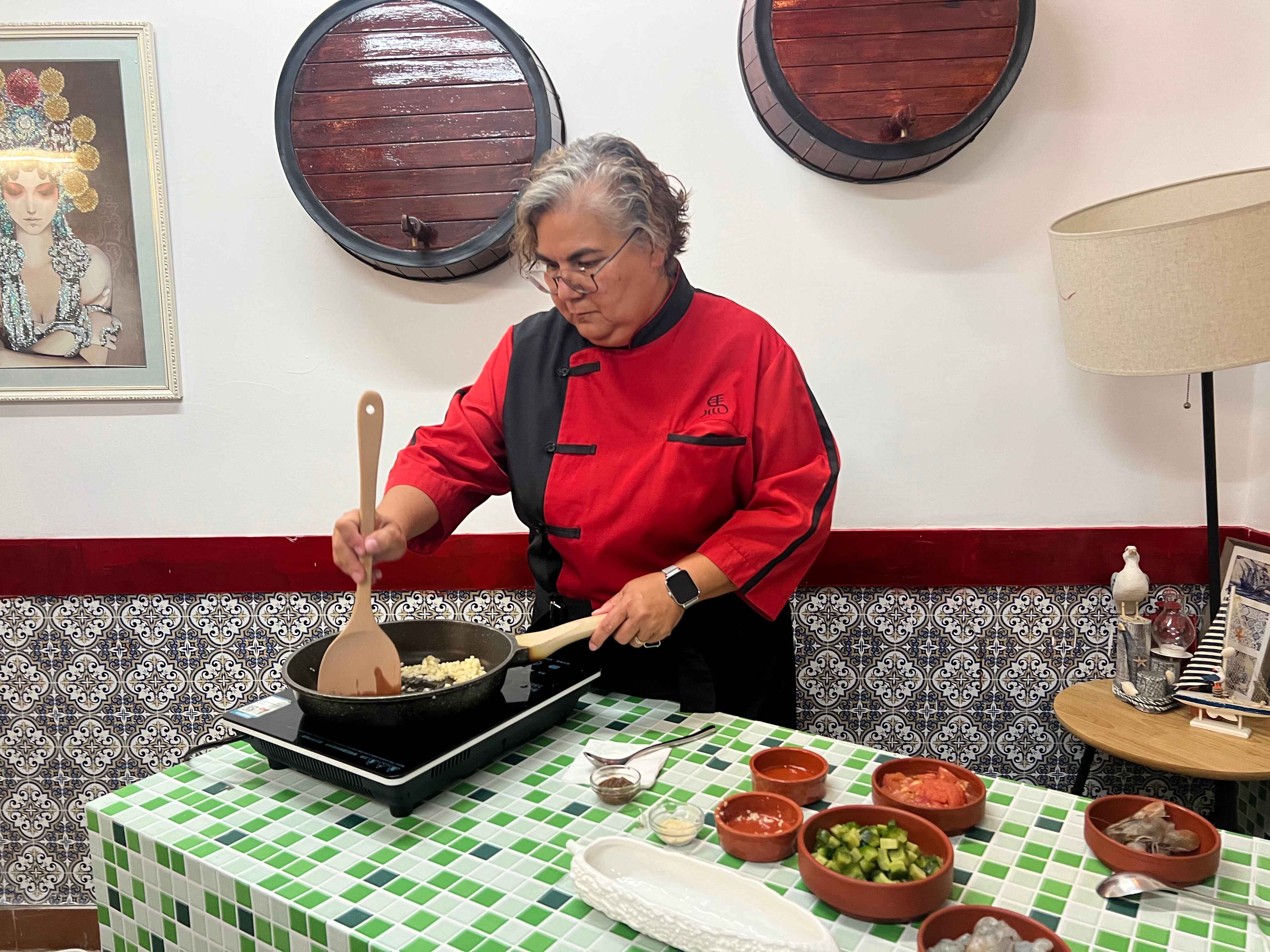 Ana Manhao doing a cooking demonstration. Photo by Karen Tee
Ana Manhao doing a cooking demonstration. Photo by Karen Tee
We end our foodie sojourn at Belos Tempos, a restaurant helmed by Ana Manhao, a former public worker who opened this restaurant in 2013 to preserve Macanese culture. Our indulgent multi-course meal includes many of the greatest hits in local cuisine, including bacalhau or dried, salted cod croquettes; Portuguese chicken, a grilled chicken in a coconut-based curry stew; fried mackerel fillets and more bacalhau but this time baked with cheese and cream.
 and Portguese baked duck rice (back).jpeg) Belos Tempos cod fish with cream (front) and Portguese baked duck rice (back). Photo by Karen Tee
Belos Tempos cod fish with cream (front) and Portguese baked duck rice (back). Photo by Karen Tee
The Portuguese baked duck rice comprising succulent duck meat baked with buttery rice and topped with Portuguese sausage is a revelation. While the dish looks like a plain version of Cantonese claypot rice, it is replete with flavors of duck and sausage that there is no need for additional enhancements.
In fact, we are so wowed by the blend of familiar yet fascinating flavor combinations that we come to a unanimous conclusion even before the meal ends – we need to return because one trip is simply not enough for a thorough foodie exploration.











 Back
Back
